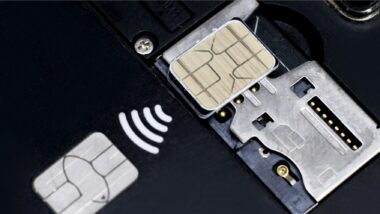
If you’ve been following our blog recently, you’ll know mobile payments are on the rise. More and more people around the world are getting used to making purchases with their smartphones, and in the case of the iPhone, these purchases are enabled and secured with the user’s fingerprints. Fingerprint biometrics are popular because the experience brings simplicity and perceived security – if your phone is lost, fraudsters won’t be able to make a payment as biometrics verification won’t pass.
Another technology rising in popularity is the smartwatch. Smartwatches have developed a lot already in the relatively short amount of time they’ve been available – for example, at MWC this year, we demonstrated the Samsung Gear S2, which uses e-SIM technology to provide consumers with the freedom to connect freely, wherever they want. But increasingly there’s demand to be able to make payments from smartwatches, and at the moment that experience is not as smooth as it could be.
Take the Apple Watch as an example. While the authentication procedure works perfectly well, it’s a little cumbersome for the consumer. Enabling Apple Pay requires the activation of a four-digit PIN on the watch. The Apple Watch uses a Bluetooth pairing feature, linking up with the iPhone. If the user activates TouchID to unlock the iPhone, the paired Apple Watch will no longer require the PIN code, as long as it’s being worn. If the user removes the watch from their wrist, or if it’s stolen, the PIN code locking mechanism is re-enabled instantaneously.
While this security solution functions perfectly well, biometrics could offer a more advanced authentication procedure and a cleaner user experience. Crucially, it wouldn’t need to be paired with the iPhone; the user can identify themselves straight on the watch, independently from the phone.
There are two foreseeable ways of implementing biometrics on a smartwatch. The first is through a TouchID sensor, which could be used to benefit both the phone and the smartwatch. OEMS like LG and HTC have already announced plans to equip their devices with TouchID. Secondly, they could use a smartwatch’s existing heartbeat sensor to measure the vein network on the wrist below the watch, which would create the ultimate seamless experience. Putting the watch on the wrist would complete the biometrics verification instantly.
We’re expecting the next generation of smartwatches to be equipped with biometric authentication. Not only are we seeing an increasing number of wearables being paired with a phone, smartwatches are gaining more independence, with greater connectivity and seamless authentication processes. In addition, the proliferation of secure elements in smartphones and wearables could result in advanced, intersecting security architecture. For instance, it will become possible to sign a transaction on a mobile for an app running on a watch.
The possibilities for biometric authentication are almost endless, and its introduction into smartwatches is a key step in that journey. Where would you like to see fingerprint authentication? Tweet to us at @Gemalto or leave a comment below. Plus, if you want to find out more about our biometric solutions, you can discover more here.


